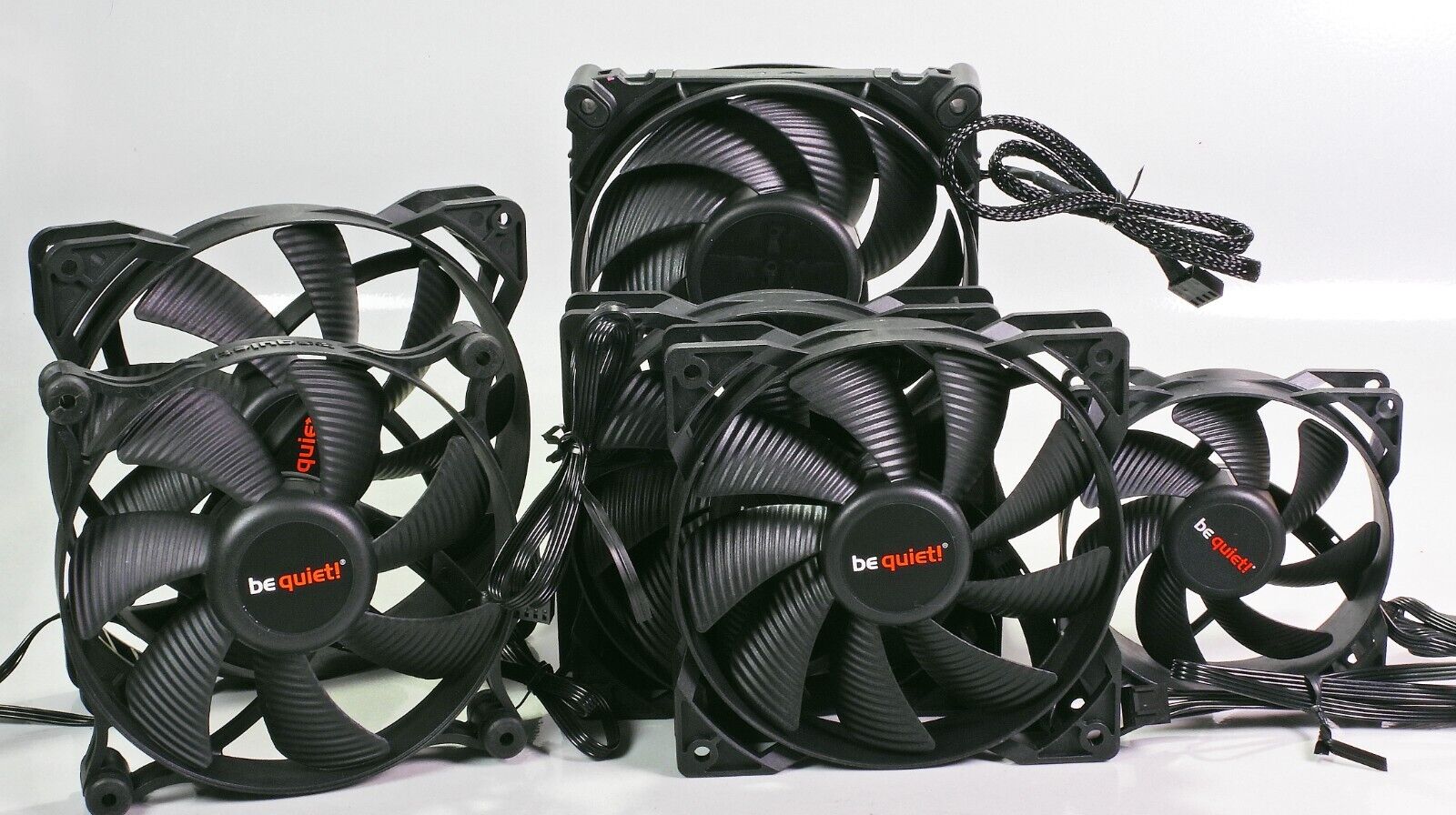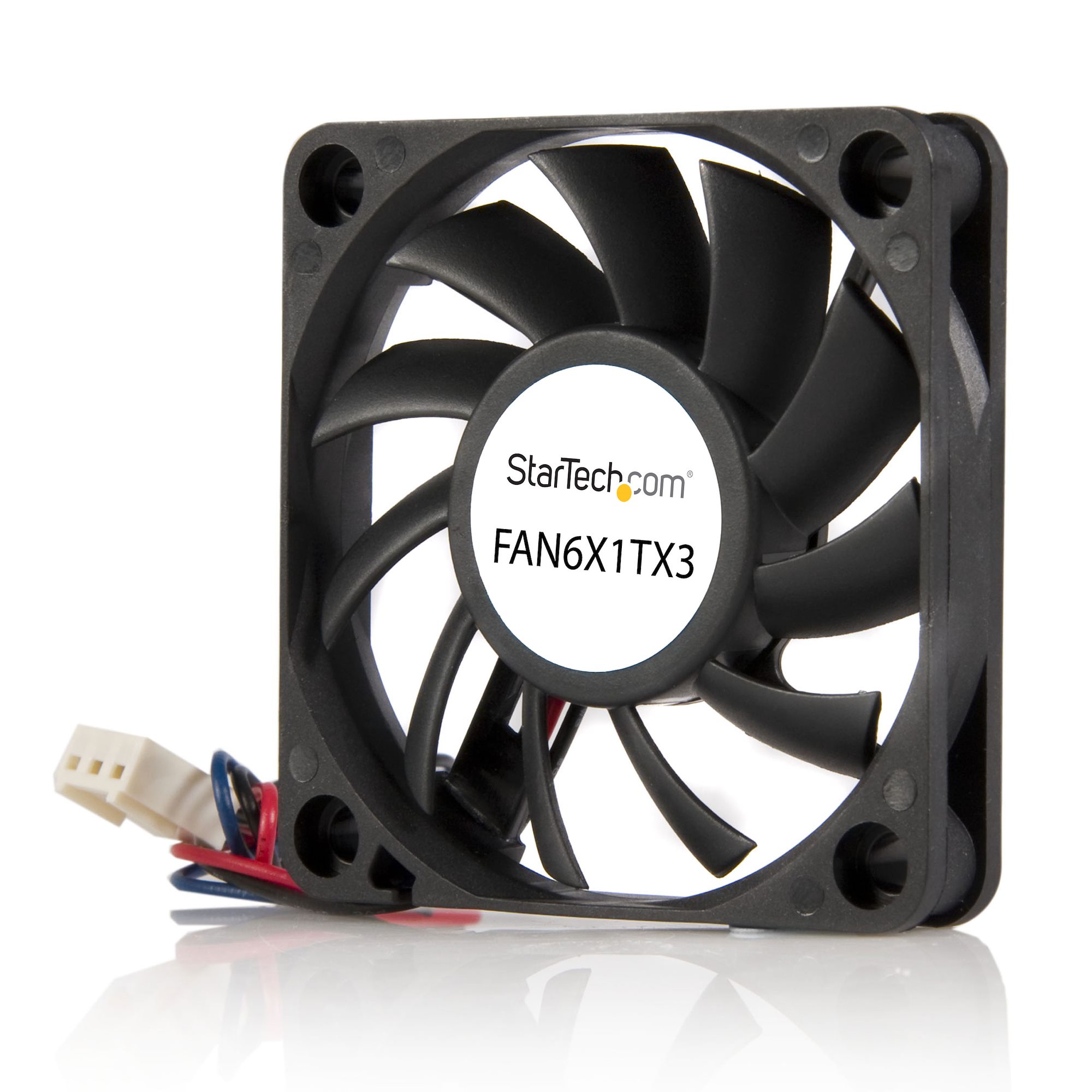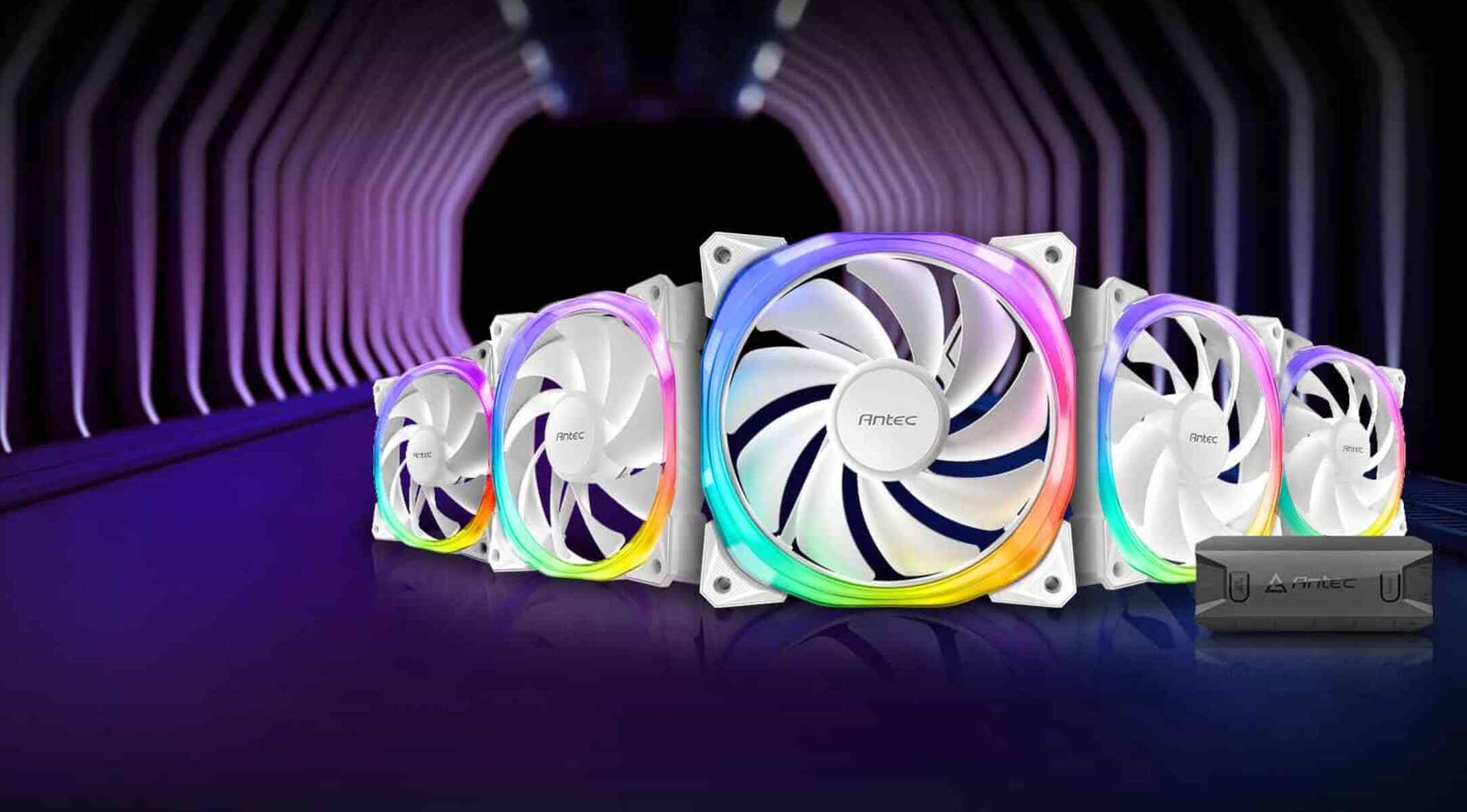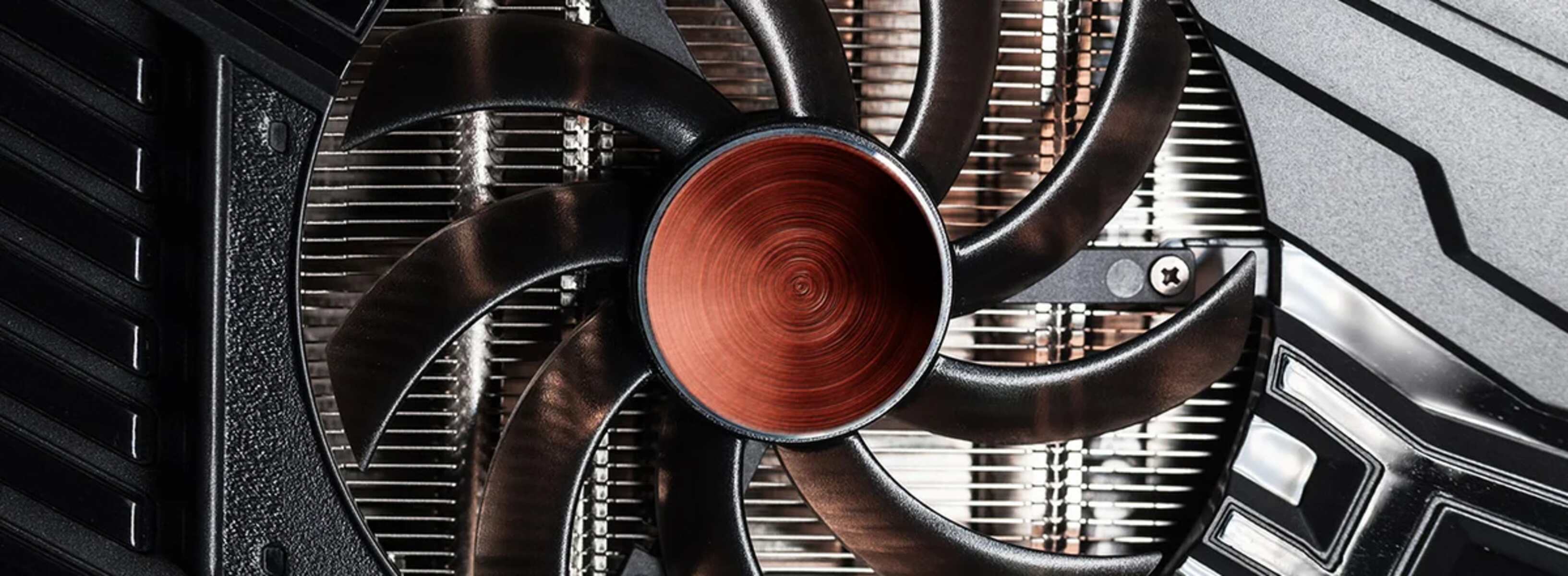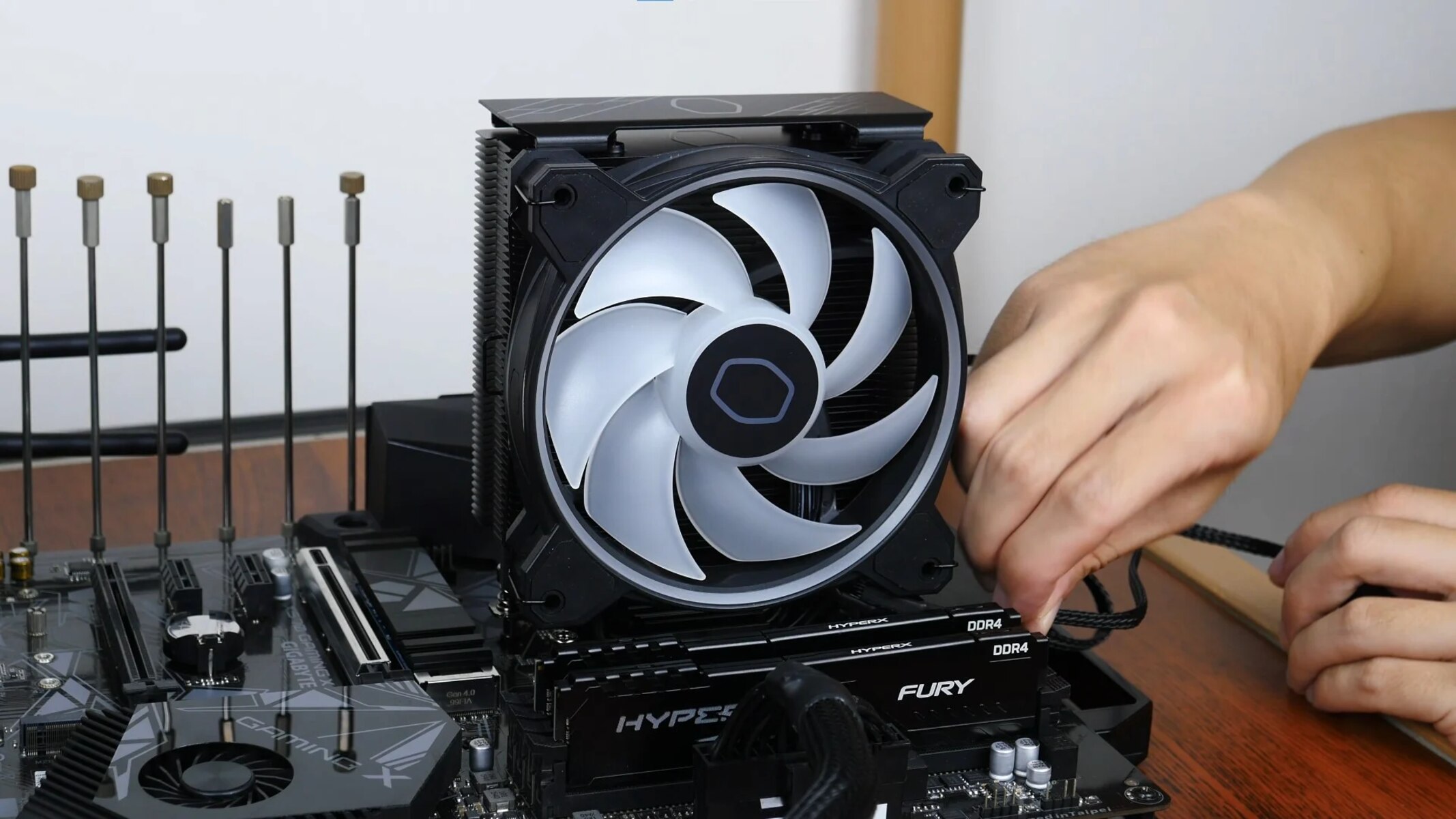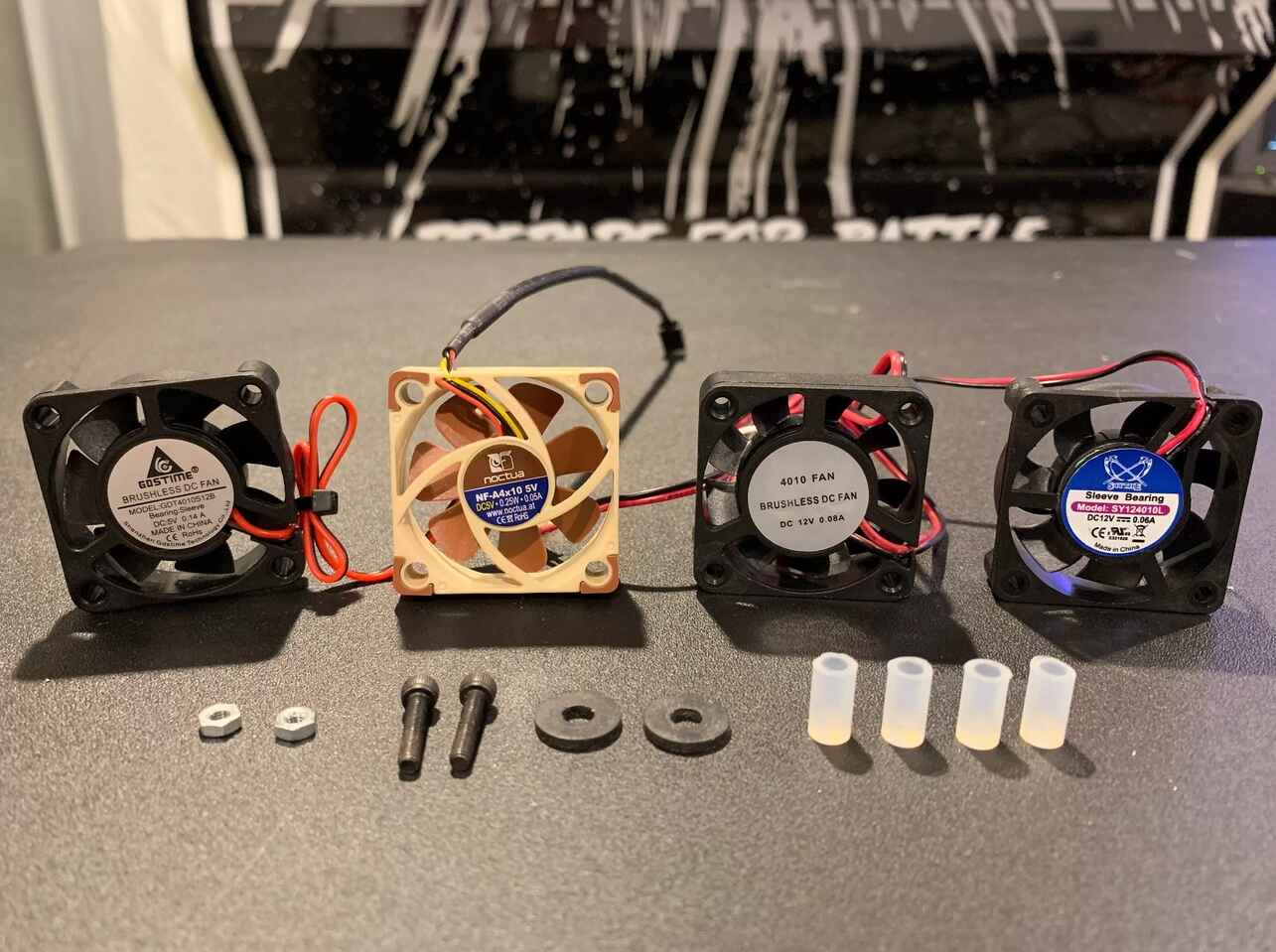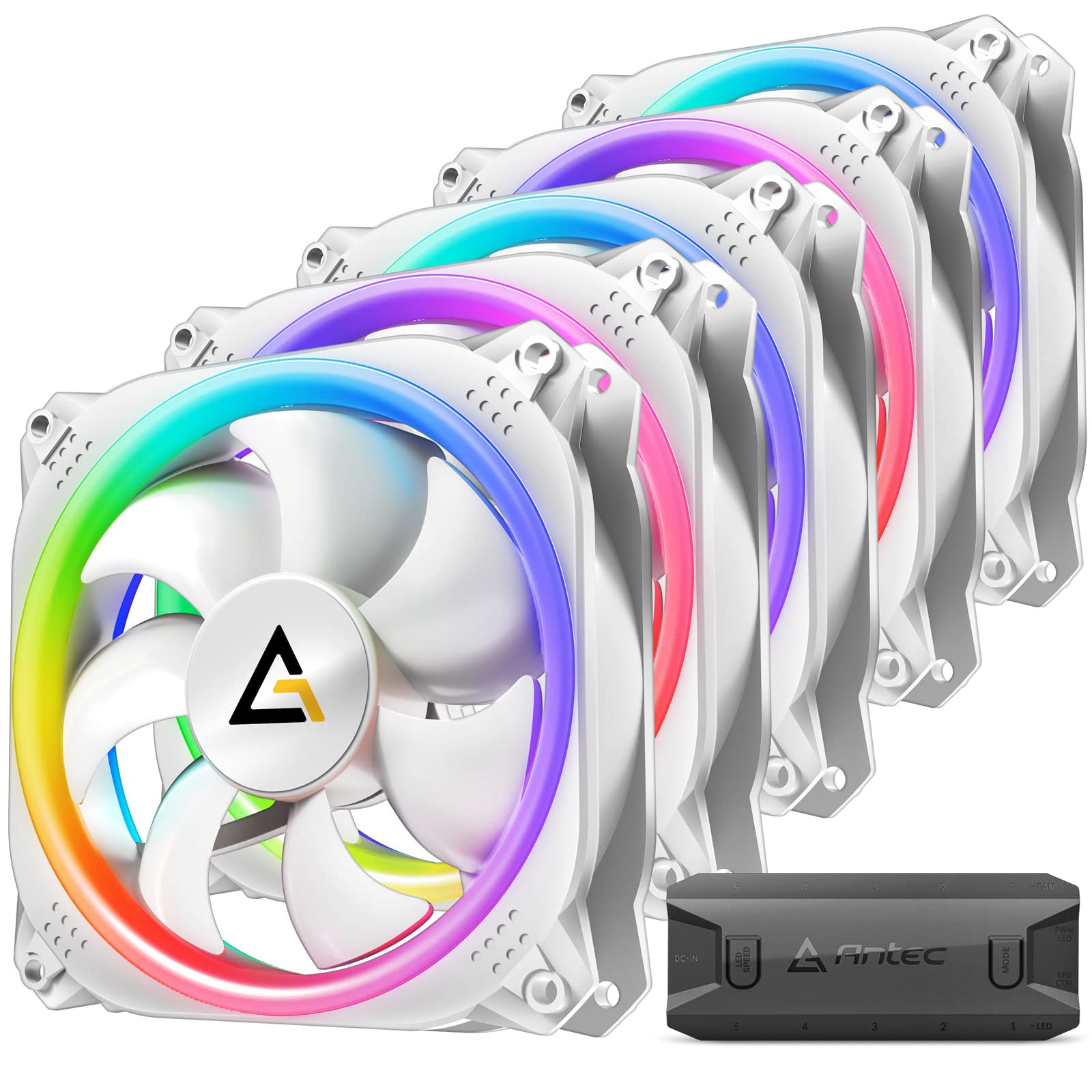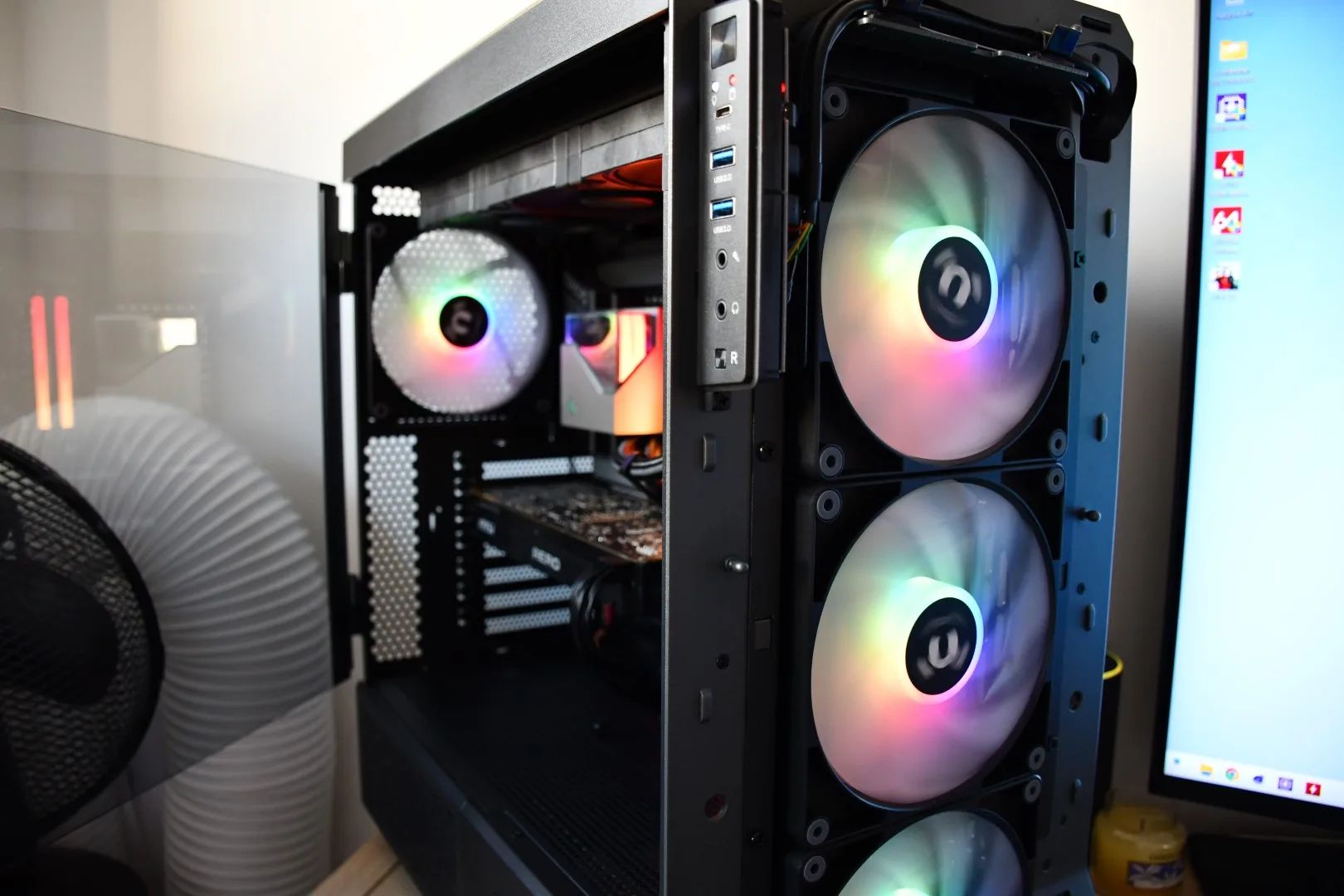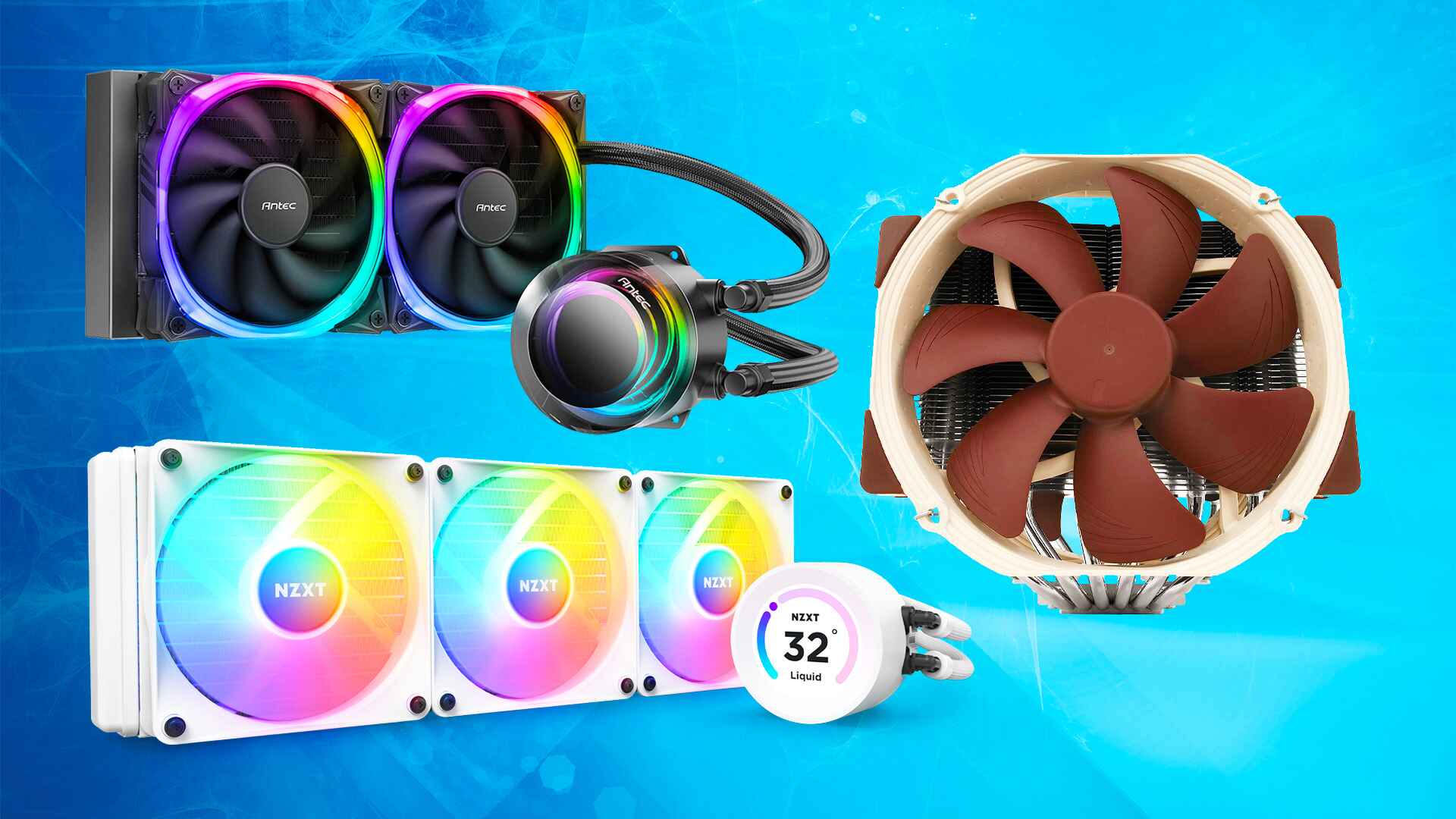Introduction
Fans are a crucial component in any computer or electronic device, as they help dissipate heat and maintain optimal operating temperatures. However, the noise generated by these fans can be a major concern for many users, especially those who prefer a quiet environment. If you are looking to minimize noise levels in your computer system, it is essential to choose the right type of case fan.
In this article, we will explore different types of case fans and focus specifically on finding the quietest option. We will delve into various fan technologies, noise reduction techniques, and factors to consider when selecting a fan for your computer system. By the end of this article, you will have a better understanding of the different fan types available and how to make an informed decision based on your noise preferences.
When it comes to fans, there are several factors to consider, such as airflow, static pressure, bearing type, and noise level. All of these elements play a crucial role in determining the overall performance and noise output of a fan. By understanding these factors, you can choose a fan that meets your noise requirements without compromising on cooling efficiency.
So, whether you are building a new PC, upgrading an existing system, or simply looking for ways to reduce noise in your computer setup, this article will provide you with valuable insights and guidance on finding the quietest case fan for your needs.
Fan Types
When it comes to case fans, there are several different types to choose from, each with its own advantages and characteristics. Understanding the distinctions between these fan types will help you make an informed decision based on your specific needs and preferences.
1. Airflow Fans: These fans are designed to move a high volume of air, making them ideal for providing efficient cooling in a computer system. They are commonly used as intake or exhaust fans to ensure proper airflow and prevent overheating. Airflow fans are known for their ability to push air through obstructed spaces, making them suitable for setups with restrictive airflow paths.
2. Static Pressure Fans: Unlike airflow fans, static pressure fans are designed to generate pressure, making them more effective at overcoming obstacles such as dense radiator fins or filters. They are commonly used in water cooling setups or for creating positive air pressure within a case to reduce the accumulation of dust. Static pressure fans are especially beneficial for systems with closed-loop liquid coolers or setups with restricted ventilation.
3. Hybrid Fans: Hybrid fans combine the qualities of both airflow and static pressure fans, offering a balance between airflow and pressure. They are designed with wider blades to increase airflow and generate sufficient pressure to push air effectively through restricted spaces. Hybrid fans are versatile and can be used as both intake and exhaust fans in various computer setups.
4. RGB Fans: In recent years, RGB fans have gained popularity for their ability to provide vibrant lighting effects and enhance the overall aesthetics of a computer system. These fans combine the functionality of airflow or static pressure fans with customizable RGB lighting options, allowing users to create visually stunning setups.
When choosing a fan type, it is important to consider factors such as the available space in your case, the required airflow or pressure, and the overall noise level. Finding the right balance between cooling efficiency and noise output will ensure a quiet and well-cooled computer system.
Airflow vs. Static Pressure Fans
When it comes to choosing between airflow and static pressure fans, it is crucial to understand their key differences and consider your specific cooling needs. Both types of fans have their own strengths and are suitable for different configurations.
Airflow fans, as the name suggests, are designed to move a high volume of air. These fans are particularly effective in setups with unrestricted airflow paths, where the main goal is to provide efficient cooling by bringing in fresh air and expelling heated air. Airflow fans are commonly used as intake or exhaust fans, helping to maintain a steady flow of cool air throughout the system.
On the other hand, static pressure fans are designed to generate pressure and overcome obstacles in their path. These fans are especially effective in setups with restrictive airflow paths, such as those with dense radiator fins, dust filters, or hard drive cages. Static pressure fans are capable of pushing air through these obstructions, ensuring that components receive adequate cooling. They are commonly used in water cooling setups, where the restricted space between radiator fins requires increased pressure to effectively dissipate heat.
To determine whether you need airflow or static pressure fans, consider the airflow restrictions within your system and the specific components that require cooling. For setups with open airflow paths and minimal obstructions, airflow fans will provide sufficient cooling while maintaining a lower noise level. However, if your system features components that require enhanced cooling, such as liquid cooling radiators or tightly packed cases, static pressure fans are the superior choice. They can effectively overcome obstacles and deliver steady airflow to critical components.
It is worth noting that there are hybrid fans available in the market that offer a balance between airflow and static pressure. These fans are designed with wider blades to generate airflow and sufficient pressure to overcome moderate restrictions. Hybrid fans provide versatility and can be used as intake or exhaust fans in various computer setups.
Ultimately, the choice between airflow and static pressure fans comes down to your specific cooling needs and the configuration of your system. Consider the airflow restrictions, cooling requirements of your components, and the desired noise level to make an informed decision that strikes the right balance between cooling efficiency and noise output.
Sleeve Bearing Fans
Sleeve bearing fans are one of the most commonly found types of fans in computer systems. They are known for their affordable price, quiet operation, and moderate performance. These fans utilize a simple design, with a sleeve made of self-lubricating material (usually bronze or brass) that supports the fan’s rotating shaft.
One of the main advantages of sleeve bearing fans is their quiet operation. The sleeve acts as a cushion between the shaft and the fan housing, reducing friction and thus minimizing noise. This makes them an ideal choice for those who prioritize a quiet computing experience.
However, sleeve bearing fans do have some limitations. Due to the simplicity of their design, the amount of lubricating material is limited. Over time, the lubrication can dry out, resulting in increased friction and noise. This can lead to a shorter lifespan compared to other fan types. It is worth noting that some manufacturers have improved their sleeve bearing designs, offering longer lifespans and reduced noise levels.
Another factor to consider when using sleeve bearing fans is their suitability for different mounting orientations. Sleeve bearing fans are typically more sensitive to vertical or horizontal mounting positions. Placing them vertically, with the shaft running perpendicular to the ground, can cause the lubricating material to pool at the bottom, potentially reducing the fan’s lifespan. To maximize the lifespan of sleeve bearing fans, it is recommended to mount them horizontally or use a fan orientation that minimizes the stress on the bearing.
In terms of performance, sleeve bearing fans provide adequate airflow for most computer systems. However, they may not be the best choice for setups that require high static pressure or continuous operation under heavy loads. In such cases, fans with alternative bearing designs, such as ball bearing or magnetic levitation, may offer better performance and longevity.
Overall, sleeve bearing fans are a cost-effective option that provides quiet operation for general-purpose computer systems. They are suitable for users who prioritize noise reduction and have moderate cooling requirements. However, if you are building a high-performance system or require fans to operate under heavy loads, it may be worth considering fans with more advanced bearing designs.
Ball Bearing Fans
Ball bearing fans are known for their durability and long lifespan, making them a popular choice for systems that require continuous operation or are subject to heavy loads. These fans utilize small steel balls positioned between the fan’s rotating shaft and the fan housing to reduce friction and ensure smooth rotation.
One of the key advantages of ball bearing fans is their robustness. The use of steel balls provides increased stability and reduces the wear and tear on the fan’s components, resulting in a longer lifespan compared to sleeve bearing fans. This makes them an excellent choice for systems that run 24/7 or undergo frequent use under demanding conditions.
Ball bearing fans are also known for their ability to withstand high temperatures. The steel balls can operate effectively even at elevated temperatures, making them suitable for environments where heat dissipation is crucial, such as gaming PCs or workstations.
Another advantage of ball bearing fans is their ability to operate in any mounting orientation. Unlike sleeve bearing fans, which are more sensitive to vertical or horizontal mounting positions, ball bearing fans can be mounted in any direction without compromising performance or longevity.
While ball bearing fans excel in terms of durability and performance, there are some trade-offs to consider. One of the main drawbacks is their noise level. Ball bearing fans tend to produce more noise compared to other fan types, especially at high speeds. However, advancements in bearing designs and fan technology have led to the development of quieter ball bearing fans, catering to those who prioritize noise reduction.
Additionally, ball bearing fans are often priced higher compared to sleeve bearing fans due to their enhanced durability and performance capabilities. The cost may be justified for systems that require high-performance cooling solutions and long-term reliability.
In summary, ball bearing fans are an excellent choice for systems that demand long-term durability, continuous operation, and high-temperature performance. They provide a reliable cooling solution that can withstand heavy loads and operate effectively in any mounting orientation. However, it’s important to consider their higher noise levels and increased cost when deciding to incorporate them into your computer system.
Magnetic Levitation Fans
Magnetic levitation fans, often referred to as maglev fans, are a relatively new and innovative type of fan that utilizes magnetic forces to suspend the fan blades. These fans offer several advantages over traditional bearing designs, including improved performance, reduced noise levels, and enhanced lifespan.
One of the key benefits of magnetic levitation fans is their exceptional performance. The magnetic suspension allows for smoother rotation, resulting in higher airflow and improved cooling efficiency. This makes them an excellent choice for systems that require high airflow or require cooling in confined spaces, such as small form factor PCs.
Another advantage of magnetic levitation fans is their quiet operation. The absence of physical contact between moving parts significantly reduces friction and noise. As a result, these fans operate at lower noise levels, even at higher speeds, providing a quieter computing experience.
The lifespan of magnetic levitation fans is considerably longer compared to traditional bearing designs. The absence of physical contact minimizes wear and tear on the fan’s components, resulting in extended longevity. This makes them an ideal choice for systems that require continuous operation or are subject to heavy loads.
Magnetic levitation fans are also known for their versatility when it comes to mounting orientations. Similar to ball bearing fans, they can be mounted in any direction without compromising performance or longevity. This flexibility allows for greater customization and ease of installation in various computer setups.
It’s worth noting that magnetic levitation fans are usually priced higher than other fan types due to their advanced technology and performance capabilities. However, the benefits they provide, including improved performance, reduced noise, and increased lifespan, make them a worthwhile investment for users seeking top-of-the-line cooling solutions.
In summary, magnetic levitation fans offer superior performance, reduced noise levels, and enhanced durability compared to traditional fans. They are an excellent choice for systems that require efficient cooling in confined spaces, demand quiet operation, or need fans with extended lifespans. While they may come at a higher price point, the benefits they provide make them a valuable investment for those seeking top-tier cooling performance.
Fluid Dynamic Bearing Fans
Fluid dynamic bearing (FDB) fans are known for their excellent balance between performance, noise level, and durability. These fans incorporate a lubricant-filled chamber around the fan’s axle, reducing friction and ensuring smooth rotation. FDB fans are a popular choice for users looking for reliable and quiet cooling solutions.
One of the key advantages of FDB fans is their quiet operation. The use of a fluid-filled chamber instead of metal-to-metal contact significantly reduces friction, resulting in lower noise levels. This makes them an ideal choice for users who prioritize a silent computing experience.
In addition to their quiet operation, FDB fans offer excellent performance and cooling efficiency. The smooth rotation provided by the fluid dynamics enhances airflow and allows for efficient heat dissipation. This makes them suitable for a wide range of applications, from standard desktop PCs to gaming rigs or high-performance workstations.
Another benefit of FDB fans is their extended lifespan. The reduced friction and wear on the components lead to increased durability and longevity. This makes them well-suited for systems that require continuous operation or are subject to heavy loads.
In terms of mounting flexibility, FDB fans can be positioned in any orientation without compromising performance or longevity. This adaptability allows for easy installation in various computer setups, catering to different airflow requirements.
When it comes to cost, FDB fans are generally priced higher than sleeve bearing fans but lower than some other advanced bearing designs. Considering their balance of performance, noise reduction, and durability, the investment in FDB fans often proves to be worthwhile for users seeking reliable and efficient cooling solutions.
In summary, fluid dynamic bearing (FDB) fans offer a compelling combination of quiet operation, performance, and durability. They are a popular choice among users looking for reliable cooling solutions with extended lifespans. Whether you need them for standard desktop use or high-performance applications, FDB fans provide efficient cooling while maintaining a quiet computing environment.
Noise Level Considerations
When choosing a case fan, noise level is a crucial factor to consider, especially for users who prioritize a quiet computing experience. The noise generated by fans is typically measured in decibels (dB), with lower dB values indicating quieter operation. Here are some key considerations for managing noise levels:
1. Manufacturer Noise Ratings: Most fan manufacturers provide noise rating information for their products. Look for fans with lower dB ratings, indicating quieter operation. However, it’s important to note that advertised noise levels are often measured under ideal conditions and may differ in real-world scenarios.
2. Fan Speed and Control: Fan speed directly impacts noise levels. Higher speeds tend to generate more noise. Consider fans with speed control options, such as PWM (Pulse Width Modulation) or voltage control, which allow you to adjust the fan speed according to your cooling needs and noise preferences.
3. Fan Size: Generally, larger fans have larger blades and can move more air at lower speeds, resulting in quieter operation. Opting for larger fans, such as 140mm or 200mm, can help reduce noise levels while still maintaining adequate cooling performance.
4. Bearing Type: Different bearing designs produce varying noise levels. Sleeve bearing fans typically operate quietly at low and medium speeds, but may get louder at higher speeds. Ball bearing fans, on the other hand, tend to produce more noise, especially at higher speeds. Consider the noise characteristics of different bearing types when making your selection.
5. Fan Placement: Proper fan placement and airflow optimization can help reduce noise levels. Consider the layout of your computer system and ensure that fans are strategically positioned to maximize airflow efficiency and minimize turbulence, which can contribute to increased noise.
6. Noise Dampening Solutions: There are various noise dampening solutions available, such as rubber anti-vibration mounts, noise-absorbing materials, and case insulation. These can help reduce vibrations and noise transmission, resulting in a quieter overall system.
7. Testimonials and Reviews: Before making a purchase, research user reviews and testimonials to gain insights into the actual noise levels of specific fan models. Real-world experiences can provide valuable information on noise performance.
By considering these factors, you can effectively manage and minimize noise levels in your computer system while still maintaining optimal cooling performance. It’s important to strike a balance between noise reduction and cooling efficiency to create a quiet and comfortable computing environment.
Noise Reduction Techniques
While selecting a quiet case fan is important, there are additional techniques you can implement to further reduce noise levels in your computer system. Here are some effective noise reduction techniques:
1. Fan Placement: Proper fan placement is crucial for minimizing noise. Ensure fans are positioned correctly to optimize airflow and reduce turbulence, which can increase noise levels. Strategic placement can also help cool specific components efficiently, reducing the need for higher fan speeds.
2. Cable Management: Organize and route cables neatly to avoid obstructing airflow and creating unnecessary noise. Tangled cables can disrupt smooth airflow and cause vibrations, leading to increased noise levels. Use cable ties, clips, and cable management solutions to keep cables tidy and out of the way.
3. Vibration Dampening: Noise can be generated by vibrations caused by fans, hard drives, or other components. Use rubber or silicone anti-vibration mounts to dampen vibrations and minimize noise transmission. Anti-vibration pads can also be placed between the fan and the case to further reduce vibration-related noise.
4. Case Insulation: Apply noise-absorbing materials, such as foam or sound-dampening panels, to the inside of your computer case. These materials help absorb and block noise, preventing it from escaping the case and reducing overall noise levels.
5. Dust Management: Accumulated dust on fan blades can cause imbalances and increase noise levels. Regularly clean your case and fans to prevent dust buildup. Use filters to keep dust from entering the case in the first place, ensuring optimal airflow and reducing the need for higher fan speeds.
6. Fan Speed Control: Adjusting fan speeds can help strike a balance between cooling performance and noise levels. Utilize software or hardware-based fan speed control options, such as PWM (Pulse Width Modulation) or fan controllers, to reduce fan speed when cooling demands are lower, resulting in quieter operation.
7. Upgrade to Quieter Components: Consider replacing noisy components, such as graphics cards or power supplies, with quieter alternatives. Look for components specifically marketed for their low noise levels or check user reviews for noise performance evaluations.
8. Liquid Cooling Solutions: Liquid cooling systems, such as all-in-one (AIO) or custom loop setups, can offer improved cooling performance with reduced noise levels compared to traditional air cooling. Liquid cooling can transfer heat away from components more efficiently, allowing fans to operate at lower speeds and produce less noise.
By implementing these noise reduction techniques, you can significantly reduce noise levels in your computer system. Each technique provides a unique approach to mitigating noise, allowing you to create a quieter and more pleasant computing environment.
Conclusion
Choosing the right case fan is essential for maintaining a well-cooled and quiet computer system. Understanding the different types of fans, such as airflow, static pressure, sleeve bearing, ball bearing, magnetic levitation, and fluid dynamic bearing fans, allows you to make an informed decision based on your specific cooling and noise requirements.
Considerations such as noise levels, fan speed control, fan placement, and noise reduction techniques all play a significant role in creating a quieter computing environment. By selecting fans with lower noise ratings, utilizing fan speed control options, optimizing fan placement, and implementing noise reduction techniques like cable management, vibration dampening, and case insulation, you can effectively reduce noise levels in your system.
It’s important to strike a balance between noise reduction and cooling performance. While quieter fans may operate at lower speeds and generate less noise, they must still provide sufficient airflow or static pressure to adequately cool your components. Additionally, it’s essential to consider the specific cooling needs of your system, the available space in your case, and the desired lifespan of your fans.
Whether you prioritize a whisper-quiet system or need a balance between cooling and noise levels, there are various fan options available to suit your needs. Conducting thorough research, reading user reviews, and considering the noise characteristics of different fan types will guide you towards selecting the most suitable fan for your specific requirements.
Ultimately, by understanding the various fan types, considering noise reduction techniques, and making informed choices, you can create a well-cooled and quiet computer system that enhances your computing experience. Prioritizing noise reduction alongside cooling performance will allow you to enjoy a more comfortable and enjoyable computing environment.







